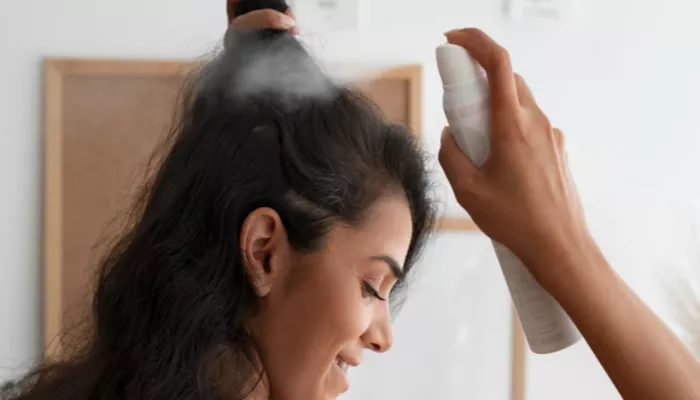Dry, brittle hair is a common struggle, but rehydrating it doesn’t have to be complicated. Whether your hair is damaged from heat styling, chemical treatments, or environmental factors, restoring moisture is key to reviving its health and shine.
This guide breaks down the process step-by-step, using simple, actionable tips backed by hair care science. Let’s dive in!
Understanding Dehydrated Hair
What Does Dehydrated Hair Look Like?
Dehydrated hair lacks moisture, which weakens its structure. Signs include:
- Dryness: Hair feels rough, straw-like, or frizzy.
- Breakage: Split ends, snaps easily when stretched.
- Dullness: Lacks shine or looks “lifeless.”
- Tangling: Knots easily, even after brushing.
Why Does Hair Lose Moisture?
Hair’s outer layer (cuticle) acts like a shield. When damaged, moisture escapes. Common causes:
- Heat Tools: Flat irons, blow dryers, or curling wands strip natural oils.
- Chemical Treatments: Coloring, perming, or relaxing disrupts the cuticle.
- Environment: Sun, wind, or dry climates dehydrate hair.
- Hard Water: Mineral buildup blocks moisture absorption.
- Poor Hair Care: Harsh shampoos, overwashing, or skipping conditioner.
How to Rehydrate Hair – Step-by-Step
Start with a Hydrating Shampoo
Avoid Sulfates: Sulfates (e.g., SLS/SLES) in shampoos strip natural oils. Switch to sulfate-free formulas with gentle cleansers like coco-glucoside.
Look For: Ingredients like glycerin, aloe vera, or honey—these attract moisture.
Wash Less Often: Overwashing dries hair. Aim for 2–3 times weekly. Use dry shampoo between washes if needed.
Condition Every Time You Wash
Use a Rich Conditioner: Apply from mid-lengths to ends. Focus on areas prone to dryness.
Key Ingredients:
- Shea Butter: Seals in moisture.
- Panthenol (Vitamin B5): Strengthens and smoothes cuticles.
- Coconut Oil: Penetrates hair to prevent protein loss.
Leave In for 3–5 Minutes: Rinse with cool water to lock in hydration.
Deep Condition Weekly with a Hair Mask
How It Works: Masks contain higher concentrations of moisturizing agents than regular conditioner.
DIY Option: Mix 2 tbsp coconut oil + 1 tbsp honey + 1 mashed avocado. Apply for 20 minutes, then rinse.
Store-Bought Masks: Look for hydrolyzed proteins (e.g., keratin) to repair gaps in the cuticle.
Seal Moisture with Oils
Lightweight Oils (Fine Hair): Argan, jojoba, or grapeseed oil. These won’t weigh hair down.
Heavy Oils (Thick/Curly Hair): Coconut, olive, or castor oil. Apply to damp hair before styling.
Tip: Warm the oil in your hands before applying for better absorption.
Leave-In Conditioner Is a Must
Why It Works: Leave-ins provide 24/7 hydration and protect against heat or friction.
Spray vs. Cream:
- Sprays: Lightweight, good for fine hair.
- Creams: Richer, ideal for thick or curly textures.
Apply to Damp Hair: Focus on ends, avoiding the roots to prevent greasiness.
Protect Hair from Heat Damage
Lower the Temperature: Keep tools below 350°F (177°C). High heat boils moisture inside the hair shaft.
Always Use a Heat Protectant: These create a barrier between your hair and heat. Look for silicones like dimethicone or natural options like marula oil.
Drink Water & Eat for Hydration
Internal Hydration Matters: Hair thrives on nutrients like omega-3s (found in salmon, walnuts) and vitamins A/C/E (spinach, citrus fruits).
Stay Hydrated: Aim for 8 glasses of water daily. Dehydration shows in hair first!
Try the “Squish to Condish” Method (Curly Hair)
Steps:
- Apply conditioner to soaking-wet hair.
- Squish hair upward to encourage curl formation.
- Rinse partially, leaving some conditioner in.
- Seal with gel or cream.
Result: Curls retain moisture and stay defined longer.
Sleep on Silk/Satin
Cotton Pillowcases absorb moisture and cause friction. Switch to silk or satin to reduce breakage and lock in hydration overnight.
Trim Split Ends Regularly
Why: Split ends travel up the hair shaft, worsening dryness. Trim every 8–12 weeks to maintain healthy ends.
Common Mistakes to Avoid
- Overusing Protein Treatments: Too much protein makes hair stiff and brittle. Balance with moisture.
- Skipping Clarifying Shampoos: Product buildup blocks hydration. Clarify monthly.
- Rubbing Hair with a Towel: Causes frizz. Pat dry instead.
- Brushing Wet Hair: Hair is fragile when wet. Use a wide-tooth comb.
Conclusion
Rehydrating hair requires patience and the right techniques. By combining gentle products, deep treatments, and protective habits, you can restore softness, strength, and shine. Start with one or two steps from this guide, track your progress, and adjust as needed. Your hair will thank you!
Final Tip: Track your routine in a journal—note what works and how your hair feels. Hydrated hair is happy hair!
Related topics:
How Long Does Blonde Dye Last?
How to Rehydrate Hair Naturally: A Step-by-Step Guide
Can I Repair My Heat-Damaged Hair Every Day?


